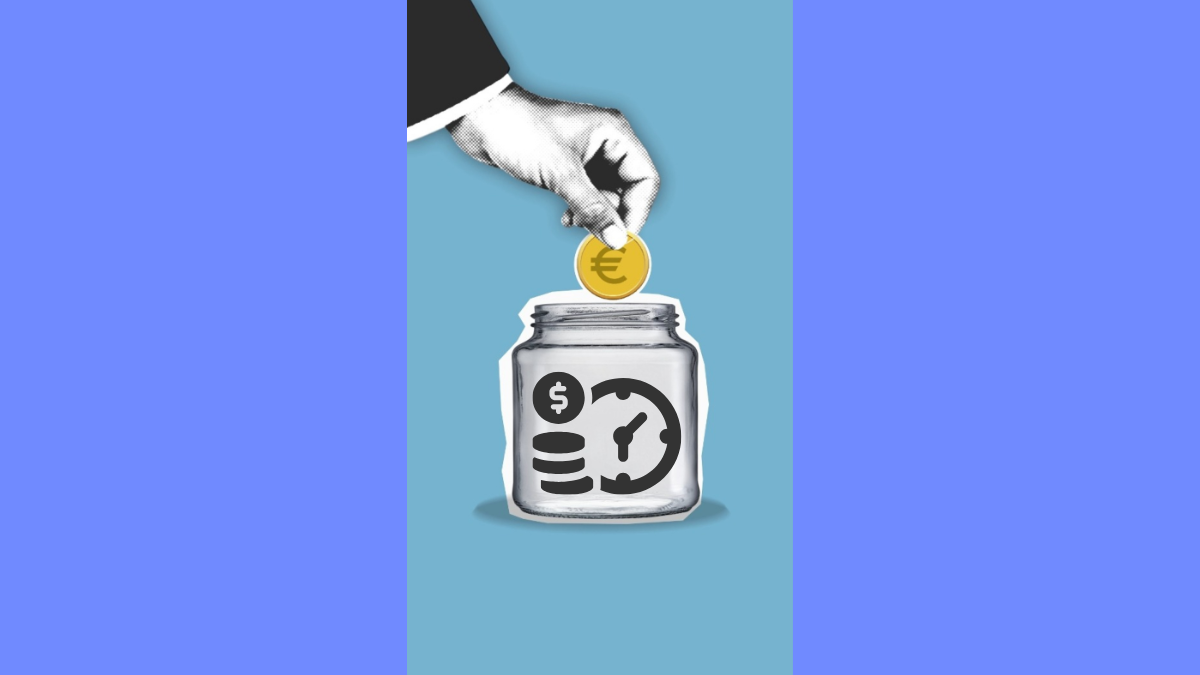Why the Market Drops (And Why It’s Normal)
Market downturns can feel alarming — especially if you’re new to investing. But in reality, market drops are a normal, expected part of the investing cycle. They happen regularly, and they’re not always a sign that something is fundamentally broken.

Understanding why the market dips helps you stay calm and avoid emotional decisions that hurt your long-term growth.
1. Market Cycles Are Natural
The stock market moves in cycles — periods of growth (bull markets) followed by periods of decline (bear markets or corrections). These are driven by economic shifts, interest rates, investor sentiment, and global events.
- Bull markets: Prices rise, optimism grows, and investors earn strong returns
- Bear markets: Prices fall 20% or more, usually for months or years
- Corrections: Short-term dips of 10–20%, often within an otherwise healthy bull market
2. Headlines Fuel Short-Term Chaos
A Fed rate hike, a tech giant’s bad earnings, or a geopolitical flare-up can send markets into a tailspin. These events create noise, but they rarely derail the long-term growth of strong companies.Example: In March 2020, the S&P 500 crashed 34% in weeks due to COVID fears. By August, it was back to all-time highs. Short-term panic, long-term recovery.
3. Selling Pressure Accelerates Declines
During a drop, many investors panic and sell — which causes more downward pressure. This creates a feedback loop, where fear drives more selling, even if nothing has changed in the underlying companies.
- Fear leads to selling
- Selling drops prices further
- More investors panic and sell
4. The Market Has Always Recovered
Every major U.S. market crash has led to a recovery. The 2008 financial crisis? Recovered by 2013. The dot-com bust? Back on track by 2007. The Great Depression? Tough, but markets roared back.
Chart Idea: [Insert a line graph showing S&P 500 recoveries post-2008 and 2020 to visualize this.]
How Panic Selling Hurts Your Returns
When the market drops, your instinct may be to sell quickly to “protect” your money — but panic selling is often one of the most damaging mistakes investors make. It turns temporary dips into permanent losses and interrupts long-term growth.
1. Selling Turns a Paper Loss Into a Real One
When your investments drop in value, that’s a paper loss — not a real one — unless you sell.
- If you stay invested, your portfolio has a chance to recover
- If you sell during the dip, the loss becomes permanent
- You lose the ability to benefit from the eventual rebound
- If you hold, your investments may recover back to or above $5,000
- If you sell at $4,000, you’ve locked in a $1,000 loss
2. Timing the Market Is Nearly Impossible
Trying to sell before the market gets worse and buy back in at the right time rarely works — even for professionals.
- You need to be right twice: when to sell and when to buy again
- The best market days often happen right after the worst ones
- Missing just a few of those recovery days can drastically reduce long-term returns
3. Missing the Recovery Can Cost You Years of Growth
Market rebounds can be sharp and unexpected. If you’re sitting in cash when the recovery starts, you miss out on the fastest gains.
- Some of the strongest stock market days occur within weeks of a major drop
- Sitting on the sidelines waiting for things to “feel better” can delay your growth by years
- A missed rebound is harder to recover from than a temporary dip
4. Panic Selling Reinforces Emotional Investing
Selling in fear trains your brain to react emotionally every time the market drops.
- You become more likely to buy high and sell low
- You lose confidence in your long-term strategy
- You create a habit of abandoning your plan when things get uncomfortable
What Long-Term Investors Know That Others Don’t
Market drops feel stressful. But long-term investors react differently — not because they’re emotionless, but because they understand how the market behaves over time. They follow principles built on experience, data, and discipline — not headlines.

1. Volatility Is a Feature, Not a Flaw
New investors often think volatility is a sign something is broken. Long-term investors know better.
- Market swings are natural — the S&P 500 has a 10% drop almost every year
- Temporary losses don’t equal permanent damage
- Corrections are part of the cycle, not interruptions to it
Example: Between 1980 and 2020, the average annual intra-year drop in the U.S. market was around 14%. Yet during that same time, the market still ended positive in most years.
2. Long-Term Trends Overpower Short-Term Noise
Trying to predict the market’s next move rarely works. But zoom out, and a clear pattern emerges: long-term growth.
- In the short term: unpredictable
- Over 10+ years: historically upward
- Trying to time the market usually backfires
Example: If you had invested $10,000 in an S&P 500 index fund in 2003 and left it alone for 20 years, you’d have over $65,000 — despite multiple recessions and crashes in between.
3. Routine Outperforms Reaction
The best investors aren’t chasing news. They’re following a system.
- They invest on a schedule
- They ignore hype and headlines
- They automate contributions
4. Compounding Only Works If You Stay In
Compound growth rewards patience, not perfection.
- Every early withdrawal interrupts the compounding process
- Staying invested long-term maximizes returns
- Time is more powerful than timing
5. Emotional Control Is More Valuable Than Market Knowledge
You can understand markets perfectly and still fail if you panic during dips. Long-term investors know how to manage fear.
- They expect corrections and plan for them
- They trust the strategy, not the sentiment
- They stay calm while others react emotionally
How to Manage Fear and Stay Rational
Investing isn't just about math — it's about mindset. Fear is natural when the market drops, but letting it control your actions can sabotage long-term growth. The best investors don’t ignore fear — they manage it with structure, perspective, and preparation.
1. Zoom Out and Look at the Big Picture
One of the fastest ways to calm anxiety is to step back from the daily noise.
- Long-term charts reveal decades of upward momentum
- Temporary downturns often look small in hindsight
- Focus on years, not weeks
2. Define Your Time Horizon
Your time horizon should guide your reaction — not the headlines.
- If you need the money soon, consider safer investments
- If you're decades away from retirement, downturns are buying opportunities
- Match your investments to your timeline — and stick to it
3. Automate So You Don’t Have to Decide
Fear thrives on decision fatigue. The more choices you face in real time, the more likely you are to react emotionally.
- Set up automatic contributions
- Use target-date funds or robo-advisors
- Remove yourself from day-to-day management
4. Use a Written Investment Plan
When panic strikes, you need more than hope — you need a plan.
- Outline your goals, timeline, and risk tolerance
- Include how you’ll respond during a market drop
- Refer back to it when you feel the urge to sell
5. Track Progress by Contributions, Not Market Value
Looking at your portfolio balance during a downturn can be discouraging. Instead, measure what you control.
- Are you still contributing regularly?
- Are you diversified according to your goals?
- Are you following your plan, even when it’s hard?
6. Talk It Out With Someone Objective
Investing can be emotional, but you don’t have to manage it alone.
- A trusted friend or advisor can offer perspective
- Sometimes saying your fears out loud helps you hear how irrational they sound
- Don’t isolate yourself when the market feels scary
Practical Steps to Take During a Downturn
Knowing what to do when the market drops is half the battle. A downturn doesn’t have to derail your financial goals — but it can, if you respond emotionally. The smartest investors use these moments as opportunities to build, not break, their portfolio.
1. Revisit Your Financial Plan — Not Just Your Emotions
Before you make any moves, pause and revisit the big picture.
- Are your goals still the same?
- Has your timeline changed?
- Are you reacting to fear, or real personal changes?
2. Keep Contributing — Even If It Feels Wrong
It’s counterintuitive, but downturns are often the best time to invest.
- Prices are lower, which means you’re buying more shares
- History shows recovery tends to follow sharp drops
- Skipping contributions now means missing future gains
3. Review (But Don’t Obsess Over) Your Portfolio
It’s okay to check your portfolio — but do it with purpose.
- Rebalance only if your allocation is way off
- Avoid overtrading — panic selling locks in losses
- Make small adjustments based on goals, not emotions
4. Diversify If You Haven’t Already
If this downturn caught you off guard, it might be a sign your portfolio is too concentrated.
- Don’t put all your money in one stock or sector
- Use index funds or ETFs for broad exposure
- Mix assets (stocks, bonds, real estate) to manage risk
5. Take a Break From the News
Market headlines are designed to grab attention — not help you invest better.
- Constant news consumption increases anxiety
- Most headlines don’t affect long-term investors at all
- Unplugging helps you think clearly and stay calm
6. Look for Opportunities (If You’re Ready)
If your emergency fund is solid and your plan is in place, a downturn can be a chance to invest more.
- Quality stocks and ETFs may be on sale
- Roth IRA contributions during downturns can be extra powerful
- Just make sure you’re not stretching your budget or taking on too much risk
What to Avoid When the Market Dips
Sometimes, the most important moves during a downturn are the ones you don’t make. Emotional reactions, poor timing, or misinformation can do more harm than the dip itself. Experienced investors avoid these common mistakes when the market turns red.
1. Panic Selling
The biggest mistake beginners make is selling at the worst possible time — during a drop. This locks in temporary losses and removes any chance of benefiting from a rebound.
Example: During the COVID-19 crash in early 2020, the S&P 500 dropped over 30% in a matter of weeks. But it recovered quickly. Those who sold in fear missed out on one of the fastest recoveries in history.
2. Timing the Bottom
Trying to guess exactly when the market will hit its lowest point is nearly impossible. Even professional investors rarely get it right.
It’s more effective to stick with a consistent investment strategy — such as dollar-cost averaging — than to try to “wait for the perfect moment.” You’re more likely to miss it than hit it.
3. Abandoning Your Strategy
If you built your investment plan based on your goals and timeline, it shouldn’t change just because the market is down.
Changing strategies mid-game often leads to worse outcomes. Stick with your plan unless your actual financial situation has changed — not just your mood.
4. Checking Your Portfolio Too Often
Constantly watching your investments during a downturn increases stress and encourages reactionary decisions.
Unless you’re planning a specific move (like rebalancing), there’s no need to check your portfolio daily. Set it, monitor it occasionally, and give it time.
5. Listening to Panic Headlines
News outlets are designed to get attention — not guide smart investing.
Headlines often exaggerate fear because fear drives clicks. That doesn’t mean the world is ending or that your portfolio is doomed. Filter information through your plan — not your panic.
6. Making Big Moves Without Research
If you’re tempted to shift everything to cash, jump into gold, or buy speculative assets during a downturn, stop and assess first.
Make sure your decisions are based on real data, not emotion. A poorly researched move can take years to recover from.
The Power of Staying Invested
The most powerful advantage in investing isn’t timing — it’s time. Staying invested, especially during uncertain periods, is what separates those who build wealth from those who miss out on it. It’s not about predicting the next move — it’s about being present for the rebound.

1. Missing the Best Days Can Destroy Your Returns
Many investors panic during downturns and pull their money out, hoping to get back in when things feel safer. But markets often recover without warning — and missing even a few good days can set you back years.
- From 2003 to 2023, missing just the 10 best days in the S&P 500 cut total returns in half
- The best days often come right after the worst ones
- If you're not in the market, you miss the rebound entirely
2. Compound Growth Only Works if You Give It Time
Compounding doesn’t reward perfect timing — it rewards consistency.
- Reinvested earnings grow on top of previous growth
- Even small investments snowball if left untouched
- Interrupting the process (by selling early) resets your progress
3. Staying In Removes the Burden of Guesswork
Trying to jump in and out of the market — especially during chaotic periods — puts pressure on every decision. It turns investing into gambling.
Staying in removes that mental burden. It replaces guessing with discipline.
- No need to “guess” the bottom
- No pressure to predict global events
- You simply follow your plan and keep going
4. Long-Term Discipline Outperforms Short-Term Brilliance
The investors who win are rarely the flashiest or the fastest. They’re the ones who stay consistent, avoid emotional mistakes, and let the math work in their favor.
- They don't panic sell during downturns
- They don't chase every hot trend
- They don’t try to beat the market — they ride with it

Offers tips and perspective from one of the largest investment firms on how to stay calm during downturns.
Learn More
Real data showing how missing a few key days in the market can drastically hurt your returns.
Learn More
Strategies to create a diversified investment plan you can stick with — even in tough markets.
Learn More




